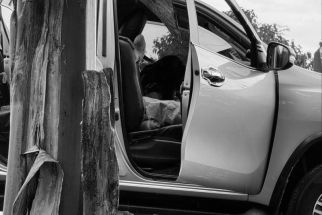6 banana varieties eyed as fiber source
MANILA, Philippines - Researchers at the Philippine Textile Research Institute (PTRI) have discovered the potential of six banana varieties as new sources of clothing fabric.
A study conducted by Marites de Leon, a senior science research specialist at the PTRI, found that the trunks of six banana cultivars — saba, lakatan, bongolan, pakil, saksik, and tordan — have high fiber yield based on the cultivar’s low residual gum content.
De Leon said the residual gum content is one of the major considerations in assessing cellulosic fiber’s suitability for textile use.
She noted that fiber with very high gum content will not be economically viable for textile use because such fiber will require higher pre-treatment inputs to attain the desired gum content level which results in low fiber yield.
De Leon said saba, lakatan, and bongolan bananas are being considered as additional or alternative to Cavendish fibers as source of raw materials for textile manufacture.
Among the six cultivars, saba fibers have residual gum content close to that of the Cavendish fibers, which have been identified as suitable for textile purposes, De Leon said.
The residual gum content of bongolan and lakatan, although significantly different from that of the Cavendish, is still within the acceptable gum content range, she added.
In terms of strength, De Leon said results of her study showed that lakatan was the strongest among the six cultivars, with mean tensile strength even higher than that of the Cavendish.
According to De Leon, these fibers could be processed into yarns limited to coarse counts, which may be fit for hand knitting, carpet making, and the like.
“When banana fibers are blended with cotton or polyester, the yarn could produce fabrics suited for apparel applications,” De Leon said.
When processing indigenous fibers for textile applications, the raw fibers should undergo degumming, where gum content, or the non-cellulosic impurities on the fiber surface, is reduced to a desired level.
De Leon stressed the need for this treatment so the fiber strands are loosely bound and can be easily opened and separated from each other during carding, a step preparatory to spinning.
She said degumming removed about 80 percent of the non-cellulosic materials from the fibers of the six cultivars and the Cavendish.
The study also found that degumming either improves or decreases the tensile strength of the fibers.
“While the treatment strengthens pineapple, maguey, and kenaf fibers, tensile strength of banana fibers decreased by as much as 33 percent. Despite the decrease, the values obtained from the six cultivars were still acceptable based on the data from other indigenous fibers, which were successfully processed into textiles,” De Leon said.
PTRI director Carlos Tomboc said banana, pineapple, and abaca fiber pre-treatment technologies are available for commercialization.
PTRI, an agency under the Department of Science and Technology, was recently awarded an ISO 9001:2008 certification for satisfying requirements in quality management system and enhancing client satisfaction.
- Latest






























